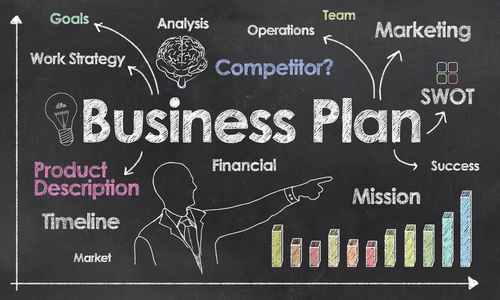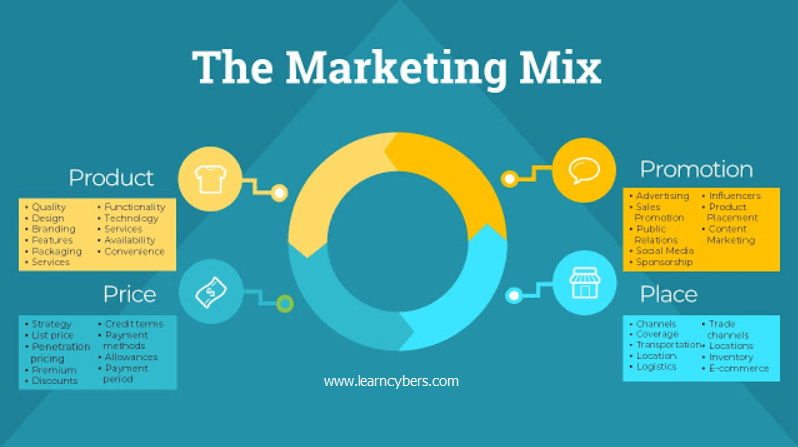A good business plan outline will help you start and run your business. It is a necessary document as a roadmap for structuring, operating, and growing your new business. The business plan outline can also help you obtain funding or attract partners.
Your business plan outline is the tool you can use to convince others that you are worth working with or financing your business.
Make sure you have a good template for your business plan outline. This will make the time you spend writing the plan shorter and more accessible.
A typical business plan outline may include background research, market analysis, customers, competitors, and advertising or operating methods strategies and concludes with financial data.

Choose an outline for your business plan that suits you. Most plans fall into one of the two categories: traditional or lean startup. Traditional business plans are more common and use standard structures.
Lean business plans for startups are less common but use the same structure as the other types of business plans – they focus on summarizing only the critical points of the essential elements of your project. They usually take an hour or less to complete and can even be as little as one page long if you need to move quickly.
Lean startup plans are quick to create and focus only on the essential elements you may need additional information.
Traditional Business Plan Outline
Traditional business plan outlines are more common, use standard structures, and encourage you to go into detail in every section – they usually require more work upfront and can be dozens of pages long. It is detailed, takes more time to write, and is more comprehensive. Lenders and investors usually require this type of plan, but it can be time-consuming.
The outline below summarizes what each section of your business plan outline should contain. There is no definitive guide to creating the perfect business plan for your particular venture, as you may want to combine sections or add additional detail on a personal level. The idea is to paint the best possible picture and present yourself as attractive and professional, whatever that means to you.
1) Executive Summary
The executive summary is written at the end of a business plan outline, summarizing everything that was described earlier in the document. It offers an introduction and overview of your company’s mission statement, what product(s) or service(s) you offer, as well as highlights any pertinent industry background information.
Although the executive summary is essential in plans written for outsiders, depending on who your audience will be, many people will only read the executive summary and not go into detail. Others may look at the summary of a plan first to decide whether or not they want to read more about it. Therefore, it is important that a summary captures the reader’s attention.
The general rule of thumb for an effective summary is that it should be as short as possible so that readers can get all the information they need quickly and easily; this usually means a maximum of 2 pages (though if you have absolutely no choice but to include additional information, you can include your cover page last).
Abstract
Briefly explain to the reader what our company is and why it will be successful. Include the mission statement, product or service, and basic information about the leadership team responsible for running the company. You should also include financial information and high-level growth plans if you apply for funding. Keep the following pointers in mind while writing the abstract.
Problem
A summary of the problem we are solving and an identifiable need in this market that we are addressing.
Solution
A description of the product/service that will solve the problem (explain).
Target Market:
A defined customer base that is most likely to buy the products or services mentioned.
Competition
Current alternatives or substitutes are currently available to customers in this market. Present both types prominently,
Financial Summary
Highlight critical points such as cost, revenue, and profitability.
Target market
A defined customer base that is most likely to buy the product or service
Funding Requirements
Provide a brief overview of how much money you will need to start your business.
Milestones indicate where you are currently and what goals you hope to achieve later, also indicating funding needs if you are seeking investors for this project.
2) Business description
Use your business description to provide detailed information about your company. Go into detail about your business’s problems and list whom you plan to serve. Explain what makes your company successful and highlight its strengths over the competition.
In this section, you can also highlight industry trends and key players so readers can better understand where your company fits within the industry – or outside of it, if applicable. Also, provide an overview of the current status or future revenue potential.
The goal should be to present yourself in a way that sets you apart from other similar businesses; explain why customers should choose your business
3) Market Analysis.
The market analysis section of your business plan outline is crucial as it identifies your best potential customers or clients. To create a practical market analysis, you should thoroughly research the primary target market for your products/services, including geographic location, demographics, and why they are a good target for you.
This is to show that you know exactly who you are selling to, so you can make educated predictions about how much these people would buy from you – and convince other prospects, too.
With a marketing analysis, you can reduce your risk, identify emerging trends, and forecast revenue. You can use a marketing analysis at various stages of your business to keep up with any major changes in the marketplace.
A detailed market analysis is usually part of your business plan because it tells you who you serve and what competitors have done so far to position themselves as well.
Below is an example of a marketing analysis that graphically illustrates how a marketing analysis is conducted.

4) Competitive Analysis
As you prepare for the competitive analysis section, you will learn how successful your direct and indirect competitors are in the marketplace. This section of your business plan outline includes an assessment of your competitors’ strengths and weaknesses, the advantages they currently have over you, and the factors that set your business apart from all others.
It also includes whether any obstacles might hinder your success as a new entrant in this market.
The main goal is to stand out from other companies to convince potential investors that investing in this company will give them a significant advantage over the competition.
However, a solid competitive analysis should identify the areas where there are no natural barriers that would prevent the future success of anyone entering those markets with a similar product line.
5) Sales and Marketing Plans
You can explain your sales strategy in detail in the sales and marketing section. This is where you outline your company’s unique selling proposition.
You should describe how you plan to bring it to market – and how you will convince people that they need what this product or service has for them. You can also include information about pricing, planned advertising and sales promotions, and any benefits of your products/services.
This is an important section of the business plan outline as it is this section you describe how you will attract and retain customers. When you talk about your marketing and sales strategies, you also need to address the actual sales process. If you are making financial projections later, you should read about what they might look like here.
The basics of marketing and sales are about understanding your market and competition and crafting a product’s message, pricing, and strategy to make it successful. There are five P’s that play a role in these processes, as well as how you will measure the success of your marketing mix. The following elements should be included in sales and marketing plans.
Product
Describe the products or services you offer to customers as part of your home business. Include details about physical characteristics (size, color, etc.), features, and differences from other similar products on the market or compared to other services. Explain why potential customers should buy these products from you and not from another vendor,
Price
Pricing strategies should always be focused on achieving your target profit margin. Consider whether you want to charge more or less than the competition and how this can be justified (i.e., what do buyers get for paying more for your product?).
Place
Indicate where the products will be sold, whether online or in-store or both and how they will reach consumers. Here it is also important to indicate if there are any shipping or labeling requirements that need to be followed and how the company will take care of them. In the end, the transaction and return policy must also be mentioned.
Promotion
This refers to the type of promotional strategies the company will use to reach the target customers. Other elements like incentives and coupons offered to the consumers can also be mentioned.
People
Once you have decided on a marketing strategy, you also need to determine the people who will be tasked with selling and marketing the product. Incentives for the sales staff and consumer satisfaction are other elements you need to pay attention to.

6) Operating Plan
The operating plan is a detailed breakdown of how your business will be run. It includes the location, descriptions of facilities and equipment, the type of employees needed for the industry, inventory requirements, and vendors. In addition to these items, other details may be included that relate to specific types of businesses, such as manufacturing processes or special items needed for daily operations.
When writing this section of the business plan, you should first explain what you have done so far to make the business operational, and then explain what remains to be done. The following items should be included:
Production overflow.
A detailed, step-by-step description of how your product or service will be produced. At the end of this section, include a subsection titled “Risks” where you discuss potential problems that could affect production and what you will do to address them before they can occur. Provide an overview of how employees will be trained to deal with safety issues related to the use of hazardous materials.
Memberships in industry associations.
In this section, demonstrate your knowledge of regional, local, or national industry standards by indicating which industries you are already a member of or would like to join.
Supply Chains
In this section, you should detail who your suppliers are, their pricing, and the standards to which they operate. You should also address crisis management, i.e. alternative methods in case the supply chain fails for any reason.
Quality Control
This section includes the quality controls that are already in place or have yet to be implemented.
7) Financial Plan
Your goal is to convince the reader that your business is stable and financially successful. If you have other collateral, list it now. Provide an outlook for the next five years, including projected income statements, balance sheets, cash flow statements, and capital budgets.
Include projections for all of these categories on an annual basis – quarterly or monthly predictions are necessary to provide more detail on the future goals of this business plan.
The reason for financial data in a business plan is twofold. First, you need these numbers if you are seeking investment from venture capitalists, angel investors, or even smart family members.
They need to see that your business can grow and make a profit quickly while they still have time to enjoy it before it is sold to them with stock so they do not suffer a loss and that you are able to repay their loans in full – something any bank or lender would require as well!
Plan your sales over a three-year period by creating a spreadsheet with different sections for each sales area and columns for each month. This will keep you on track.
Following the revenue forecast, create an expense budget to understand how much it will cost you to generate the projected revenue. After you have created the expense budget, create a cash flow statement detailing the amount of cash coming in and going out.
You will also need to create an income projection, which is a pro forma income statement that lists the projections for the business for the next three days. You must also project a balance sheet.
8) Appendices and Attachments.
In addition to the sections above, please include any other information supporting your business idea’s credibility and underpinning its potential success.
You may have in this section marketing studies, photos of your product, permits/patents/ other intellectual property rights, credit histories (including bankruptcies), resumes, marketing materials, and contracts or other legal agreements relevant to your business.
How long should a business plan outline be?
The length of a business plan varies depending on the level of detail you include in each section. However, if you are not seeking any funding, your first business plan doesn’t need to be lengthy.
You only need enough information that can be completed within 30-minutes, and this should serve as more like a long-term management tool where updates can quickly happen regularly.
Conclusion
There is no set order to your business plan, the only exception being that the executive summary should always come first. Beyond that, it depends on what you want to achieve with your plan.
If you are writing a business plan to help yourself organize and gather information and create a roadmap, then managing it intuitively would be most helpful for your process (for example by grouping similar content together, such as all material related to markets).
However, they are written to seek funding or gather support from other people before launching the company, then leading with convincing materials is essential. This will encourage readers who may have been skeptical about reading more of this document because they might value these things (such as highlighting strengths).



![21 Worst Shark Tank Failures And Why They Failed? [2024] 6 Shark Tank Failures](https://thehustlestory.com/wp-content/uploads/2021/11/Shark-Tank-Fails-Blog-Banner-2.jpg)


